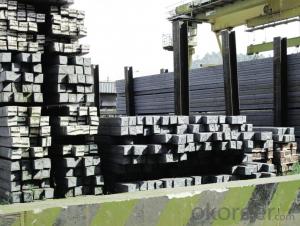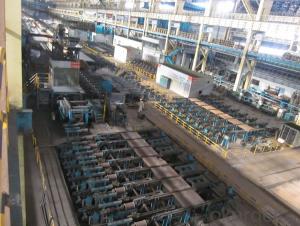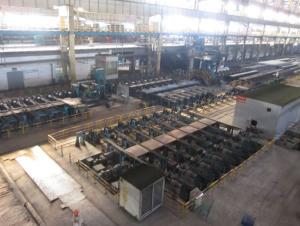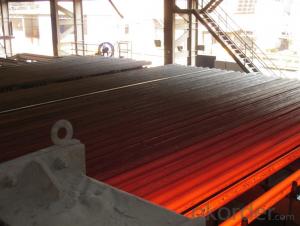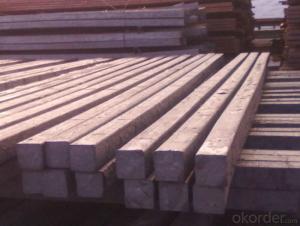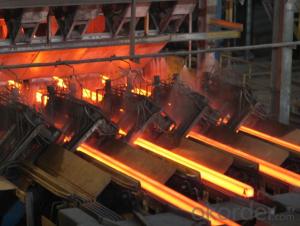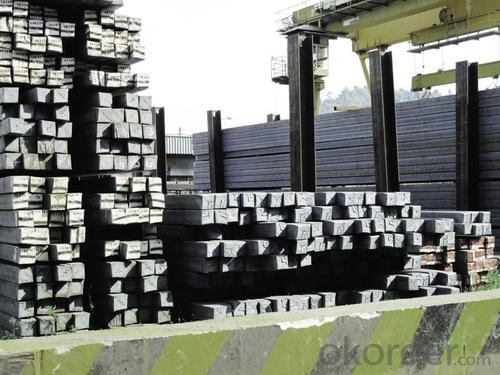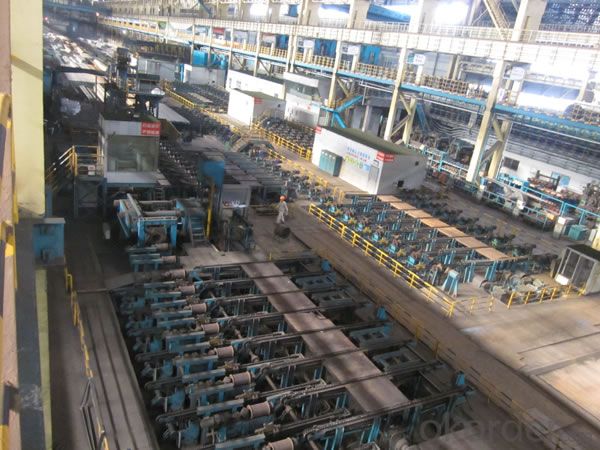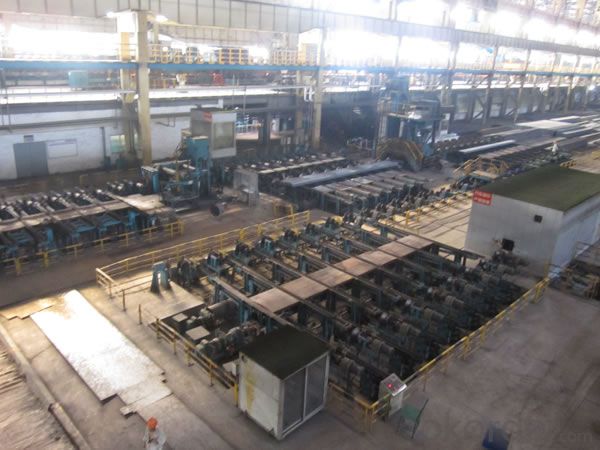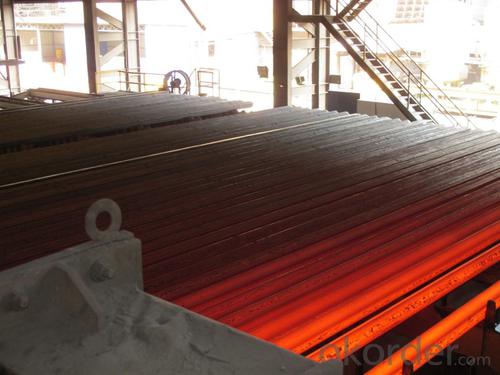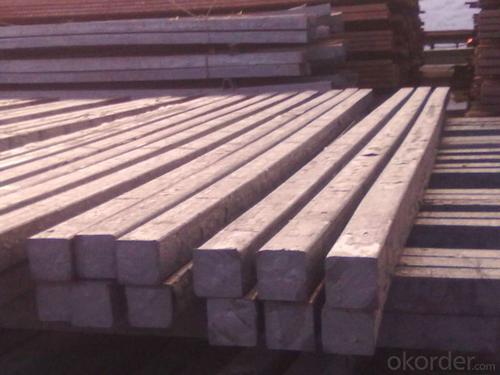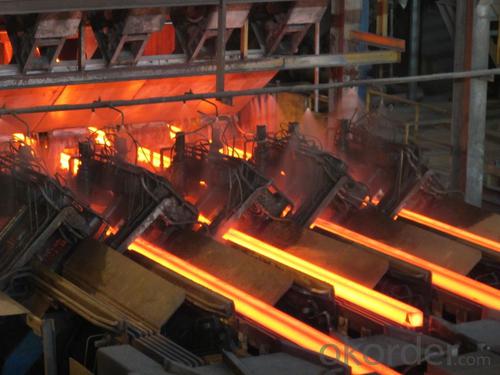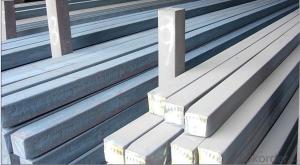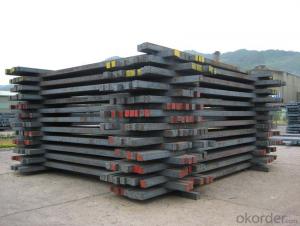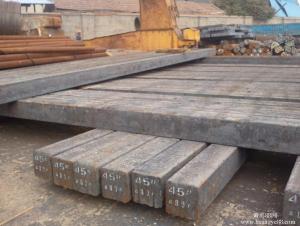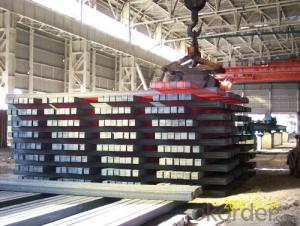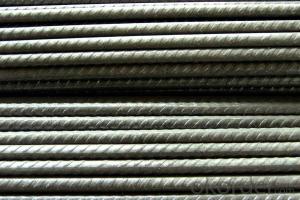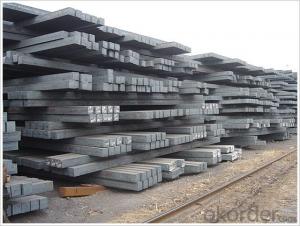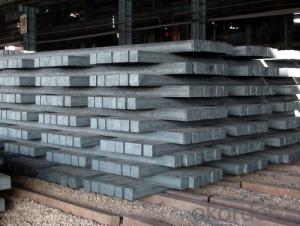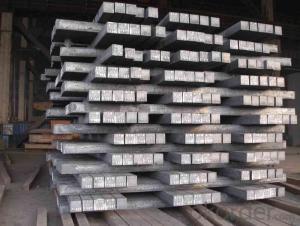Square Steel Billet Q235 Grade Prime Quality 10#
- Loading Port:
- Tianjin
- Payment Terms:
- TT OR LC
- Min Order Qty:
- 2000 m.t
- Supply Capability:
- 50000 m.t/month
OKorder Service Pledge
OKorder Financial Service
You Might Also Like
Description of Square Steel Billet Q235 Grade Prime Quality 10#
M. S. Billets are used for rolling of TMT Re-Bars of Fe415 and Fe500 Grade and various other structural steel products.
CRS Billets are used for rolling of CRS TMT Re-Bars.
Special Alloy Billets are used for rolling of any special grade TMT Re-Bars like Earthquake resistant TMT Re-Bars and for special grade structural steel products.
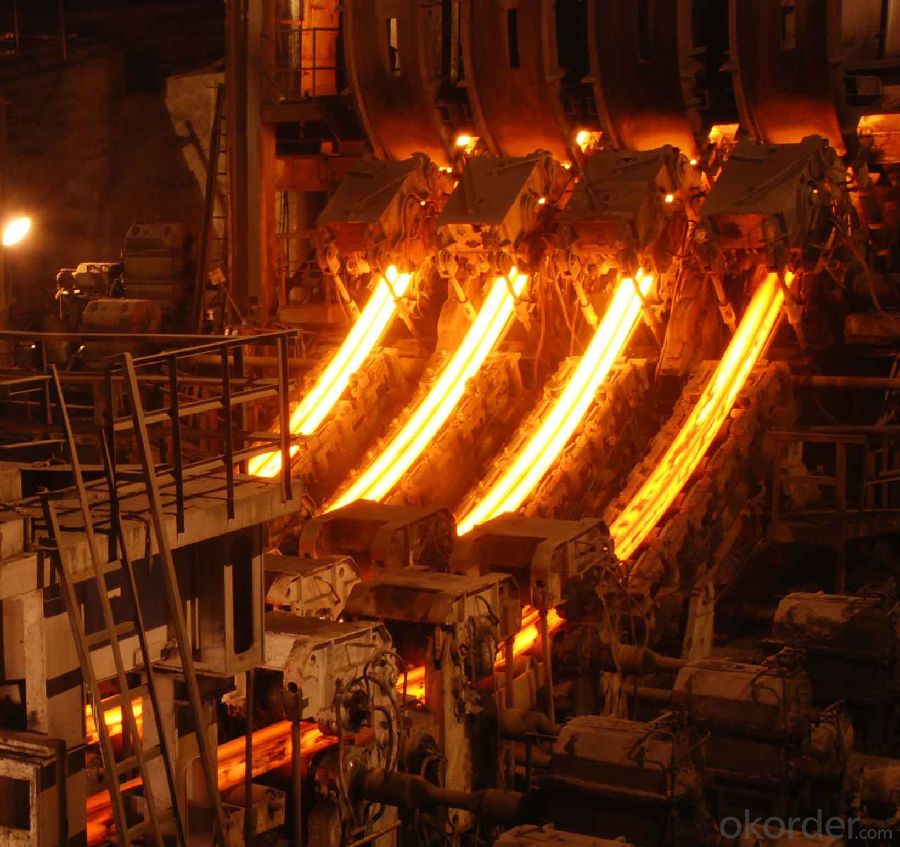
Main Feature Square Steel Billet Q235 Grade Prime Quality 10#
Raw elements(C,Fe,Ni,Mn,Cr,Cu.)---Smelted ingots by AOD finery---hot rolled into black suface---pickling in acid liquid---cold drawn----polished by automatically machine--- cutting into pieces---checking quanlity
Applications of Square Steel Billet Q235 Grade Prime Quality 10#
Widely Used in the areas such as Stainless Steel Fasteners, Chains, Kitchen and Sanitary wares, Furniture handles, Handrails, Electroplating and Electrolyzing pendants, Foods, Electron, Petroleum, Construction and Decoration, etc. Products have a high strength after cold-working. Electronic products parts, Medical appliance, Springs, Bus Inside and Outside packaging and building, Street Lamp Posts, etc. Decoration materials and Outdoor Publicity Billboard. Used for the products which have the Anti-Stress Corrosion requirement. Electron Products, Table-wares, Bolts, Nuts, Screen Meshes, Cumbustors and so on.
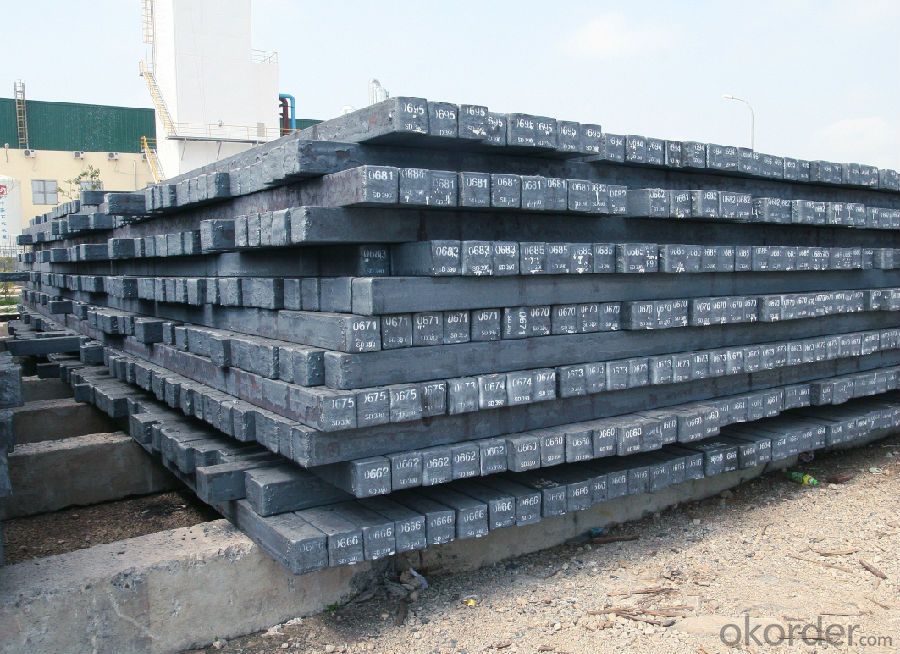
Specifications of Square Steel Billet Q235 Grade Prime Quality 10#
| Standard | C(%) | Mn(%) | S(%) | P(%) | Si(%) |
| Q195 | ≤0.12 | ≤0.50 | ≤0.040 | ≤0.035 | ≤0.30 |
| Q235 | ≤0.20 | ≤1.40 | ≤0.045 | ≤0.045 | ≤0.35 |
| Q275 | ≤0.22 | ≤1.50 | ≤0.045 | ≤0.045 | ≤0.35 |
| 20MnSi | 0.17-0.25 | 1.2-1.6 | ≤ 0.050 | ≤ 0.050 | 0.40-0.80 |
| 3SP | 0.14-0.22 | 0.40-0.85 | ≤ 0.050 | ≤ 0.040 | 0.05-0.15 |
| 5SP | 0.28-0.37 | 0.50-1.00 | ≤ 0.050 | ≤ 0.040 | 0.15-0.30 |
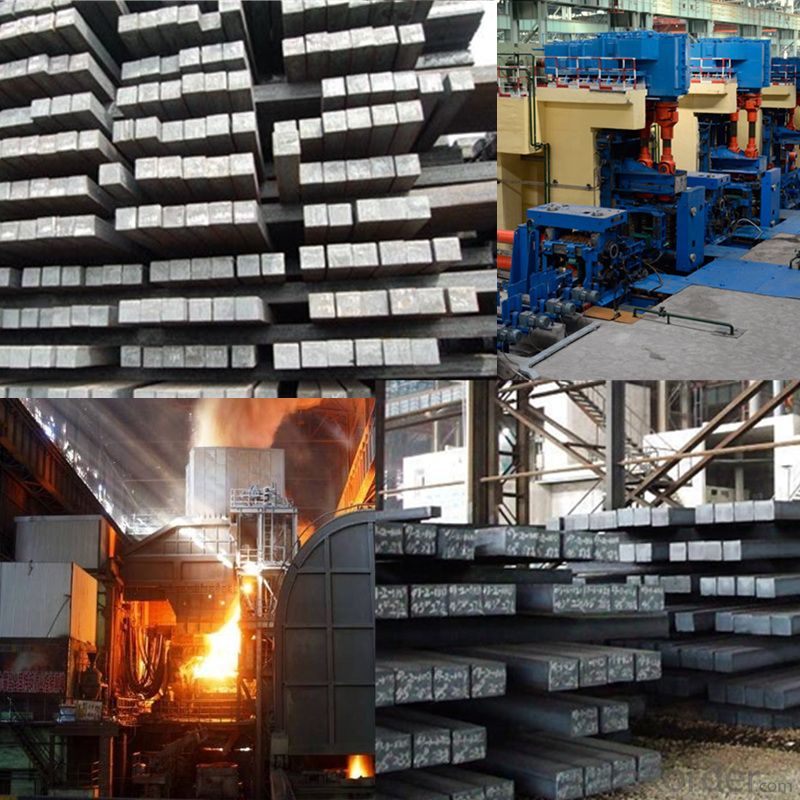
FAQ of Square Steel Billet Q235 Grade Prime Quality 10#
We have organized several common questions for our clients,may help you sincerely:
1. How Can I Visit There?
Our company is located in Tianjin City, China, near Beijing. You can fly to Tianjin Airport Directly. All our clients, from home or aboard, are warmly welcome to visit us!
2. How Can I Get Some Sample?
We are honored to offer you sample.
3. Why choose CNBM?
Our delivery time about 15-20days for standard sizes, if you have other requirements like hardness, quanity and width ,it is about 20-40days. But don't worry we also try our best for the delivery time ,because time longer and our cost is higher.
- Q: How do steel billets contribute to the marine industry?
- The marine industry relies heavily on steel billets, which serve a crucial role in constructing and maintaining marine structures and vessels. These semi-finished steel products offer numerous benefits and are widely used in the marine industry. First and foremost, steel billets possess excellent strength properties and are highly durable. This makes them ideal for withstanding harsh marine conditions like corrosion, extreme temperatures, and high-pressure environments. They are commonly used in building ship hulls, offshore platforms, and other marine structures that face the challenging conditions of the sea. Additionally, steel billets can be easily shaped and molded into various forms, making them versatile for a wide range of marine applications. They can be used to produce different components and parts such as propeller shafts, engine components, pipelines, and structural beams. Moreover, steel billets are vital in manufacturing anchors, chains, and other mooring equipment crucial for securing vessels and offshore structures. Furthermore, steel billets are known for their excellent weldability, which is essential in the marine industry. Regular maintenance, repair, and modification are common requirements for ships and offshore structures. The seamless welding of steel billets allows for efficient repairs and alterations, ensuring the structural integrity and safety of marine vessels and infrastructure. In terms of sustainability, steel billets have a long lifespan and can be recycled multiple times. This makes them an environmentally friendly choice for the marine industry, reducing the need for new raw materials and minimizing environmental impact. To summarize, steel billets are indispensable to the marine industry due to their durability, strength, versatility, weldability, and sustainability. Their qualities enable their use in constructing, repairing, and maintaining marine structures and vessels, ensuring their reliability and longevity in the challenging marine environment.
- Q: How are steel billets used in the production of agricultural vehicles?
- Steel billets are an essential component in the production of agricultural vehicles. These billets, which are semi-finished metal forms, are used in various stages of the manufacturing process to create the structural framework and key components of agricultural vehicles. Firstly, steel billets are used to produce the chassis or frame of agricultural vehicles. The high strength and durability of steel make it an ideal material for this purpose. The billets are melted down and shaped into the desired form, which provides the necessary strength to support the weight of the vehicle and withstand the harsh conditions encountered in agricultural operations. Additionally, steel billets are utilized in the creation of key components such as axles, wheels, and engine parts. These components need to have high tensile strength and resistance to wear and tear. By using steel billets, manufacturers can ensure that these parts possess the necessary qualities to withstand the demanding nature of agricultural work. Moreover, steel billets are also employed in the manufacturing of equipment attachments for agricultural vehicles. Attachments such as loaders, plows, and cultivators require sturdy and robust materials to handle heavy workloads and tough terrains. Steel billets provide the necessary strength and durability to withstand the intense forces and impacts these attachments encounter during use. In summary, steel billets play a crucial role in the production of agricultural vehicles. They are used to create the chassis, key components, and equipment attachments, providing the necessary strength, durability, and resistance to ensure these vehicles can efficiently and effectively perform the demanding tasks required in the agricultural industry.
- Q: What are the common defects found in steel billets?
- There are several common defects that can be found in steel billets. These defects can occur during the manufacturing process or due to external factors. One common defect is surface cracks, which can occur due to improper cooling, handling, or excessive stress during rolling or forming. These cracks can weaken the billet and affect its overall strength and integrity. Another common defect is internal voids or inclusions, which can occur due to the presence of impurities or foreign particles in the steel. These voids can create weak spots in the billet and can lead to structural failures or reduced mechanical properties. Misalignment or misshaping is another defect that can occur during the cooling or forming process. This defect can result in uneven thickness or dimensions, which can compromise the billet's performance and suitability for its intended application. In addition, excessive segregation of alloying elements can occur, leading to uneven distribution of properties within the billet. This can result in inconsistent mechanical properties and reduced overall quality. Lastly, surface defects such as scale, pitting, or surface imperfections can also be found in steel billets. These defects can occur due to improper handling, storage, or exposure to harsh environments. While these defects may not affect the structural integrity of the billet, they can impact the surface finish and aesthetics of the final product. Overall, it is essential to identify and address these common defects in steel billets to ensure the production of high-quality and reliable steel products. Regular inspections, quality control measures, and proper handling and storage techniques can help minimize and prevent these defects.
- Q: How do steel billets contribute to the manufacturing of water and wastewater treatment equipment?
- Steel billets play a crucial role in the manufacturing of water and wastewater treatment equipment. These billets are essentially semi-finished steel products that are used as raw materials for various industrial applications. When it comes to the water and wastewater treatment industry, steel billets are utilized in the production of key components such as tanks, pipes, valves, and pumps. One of the primary reasons steel billets are favored in this industry is due to their excellent strength and durability. Water and wastewater treatment equipment are subjected to harsh operating conditions, including exposure to corrosive chemicals, high pressure, and extreme temperatures. Steel billets, made from high-quality materials such as carbon steel or stainless steel, offer the necessary strength and resistance to withstand these demanding environments. Furthermore, steel billets can be easily fabricated and formed into different shapes and sizes, making them highly versatile for manufacturing water and wastewater treatment equipment. These billets can be forged, rolled, or extruded to create components with precise specifications, ensuring a perfect fit and optimal functionality. The corrosion resistance of stainless steel billets is particularly valuable in water and wastewater treatment equipment. These billets are highly resistant to rust and corrosion, preventing contamination of the water supply and ensuring the longevity of the equipment. Stainless steel billets are also hygienic, making them suitable for applications where maintaining water quality and cleanliness is of utmost importance. Additionally, steel billets offer cost-effectiveness in the manufacturing process. The abundance of steel as a material and its recyclability make it a cost-efficient choice for producing water and wastewater treatment equipment. The long lifespan of steel components also reduces the need for frequent replacements, resulting in lower maintenance and operational costs. In summary, steel billets are essential in the manufacturing of water and wastewater treatment equipment due to their strength, durability, versatility, corrosion resistance, and cost-effectiveness. These billets provide the necessary raw materials to create robust and reliable components that can withstand the challenging conditions of the water treatment industry.
- Q: What are the common surface treatments for steel billets?
- Steel billets can undergo several surface treatments to improve performance and protect against corrosion. Common treatments include: 1. Hot-dip galvanizing: Immersing billets in molten zinc creates a protective coating, offering excellent corrosion resistance for outdoor applications. 2. Electroplating: Passing an electric current through a metal ion solution deposits metals like nickel, chromium, or zinc onto billet surfaces, providing desired properties and appearance. 3. Powder coating: Spraying dry powder onto billet surfaces and heating it forms a durable, chemical-resistant coating. This method offers various color options and UV radiation protection. 4. Phosphating: Applying a phosphate coating improves corrosion resistance and promotes paint adhesion, suitable for subsequent painting or powder coating. 5. Blackening: Applying a chemical solution creates a black oxide layer, enhancing appearance and providing mild corrosion resistance for decorative purposes. 6. Passivation: Treating billets with an acid solution removes contaminants and creates a passive oxide layer, improving corrosion resistance, especially for stainless steel billets. These treatments are widely used in industries to enhance billet properties and lifespan. The choice depends on specific requirements, including application, appearance, and environmental conditions.
- Q: How are steel billets reheated before rolling or forging?
- Steel billets are reheated before rolling or forging through a process known as billet heating. This process involves subjecting the billets to high temperatures to make them more malleable and easier to shape. There are several methods commonly used for billet heating, including: 1. Furnaces: The most common method of reheating steel billets is through the use of furnaces. These furnaces are typically gas-fired and can reach temperatures of up to 1,200 degrees Celsius. The billets are loaded into the furnace and heated for a specific period of time to achieve the desired temperature. The furnace provides a controlled environment, allowing for even heating and uniformity. 2. Induction heating: Another method used for reheating steel billets is induction heating. This process utilizes electromagnetic induction to heat the billets. An alternating current is passed through a copper coil, creating a magnetic field. The billets are then placed inside the coil, and the magnetic field induces eddy currents within the billets, generating heat. Induction heating offers precise temperature control and rapid heating rates, making it suitable for high-speed production. 3. Electric resistance heating: Electric resistance heating is another technique employed for reheating steel billets. This method involves passing an electric current through the billets, causing them to heat up due to the resistance encountered. Electric resistance heating can be achieved using various types of heating elements, such as graphite electrodes or resistance heating wires. This method offers precise temperature control and is commonly used for smaller-scale operations. Regardless of the heating method used, it is essential to carefully control the temperature and heating time to ensure the billets reach the optimal temperature for rolling or forging. The reheating process allows the steel to become more pliable, reducing its hardness and increasing its ductility, making it easier to shape and form into the desired end product.
- Q: How do steel billets contribute to the aerospace industry?
- Steel billets are an essential component in the aerospace industry as they serve as the raw material for manufacturing various critical parts and components. These billets are used to produce high-strength and lightweight steel alloys that are crucial for aircraft structures, such as fuselages, wings, and landing gears. The superior strength and durability of steel billets allow for the construction of robust and reliable aircraft, ensuring safety and performance in demanding aerospace operations.
- Q: Are steel billets used in the production of electrical transmission towers?
- Yes, steel billets are commonly used in the production of electrical transmission towers. Steel billets are the raw material that is used to manufacture various steel products, including transmission towers. These billets are heated and then shaped into the required sections and lengths to construct the tower structures.
- Q: Can steel billets be used for making jewelry?
- Although steel billets have the technical capability to be utilized in the creation of jewelry, it is not a material commonly chosen or favored for this particular purpose. Steel's main applications lie within the construction and manufacturing sectors, given its notable strength and durability. Conversely, jewelry often necessitates materials that possess visually appealing attributes, malleability, and hypoallergenic properties. When it comes to fine jewelry, steel is not typically regarded as visually attractive due to its lack of luster and shine, which are inherent in precious metals like gold or silver. In addition, steel lacks the malleability of other metals commonly employed in jewelry production, thereby making it arduous to fashion intricate designs or delicate details. Lastly, steel may not be hypoallergenic, potentially causing allergic reactions or skin irritations for certain individuals wearing steel jewelry. In summary, while steel billets can technically be employed in jewelry making, they are not the most fitting or favored material for this purpose.
- Q: What are the common quality control measures for steel billets?
- Some common quality control measures for steel billets include visual inspection for surface defects, dimensional checks to ensure the correct size and shape, hardness testing to verify the desired hardness level, chemical analysis to determine the composition of the steel, and non-destructive testing techniques such as ultrasonic or magnetic particle inspection to detect internal flaws or cracks. Additionally, mechanical property testing, such as tensile or impact testing, may be performed to evaluate the strength and toughness of the billets.
Send your message to us
Square Steel Billet Q235 Grade Prime Quality 10#
- Loading Port:
- Tianjin
- Payment Terms:
- TT OR LC
- Min Order Qty:
- 2000 m.t
- Supply Capability:
- 50000 m.t/month
OKorder Service Pledge
OKorder Financial Service
Similar products
Hot products
Hot Searches
Related keywords
